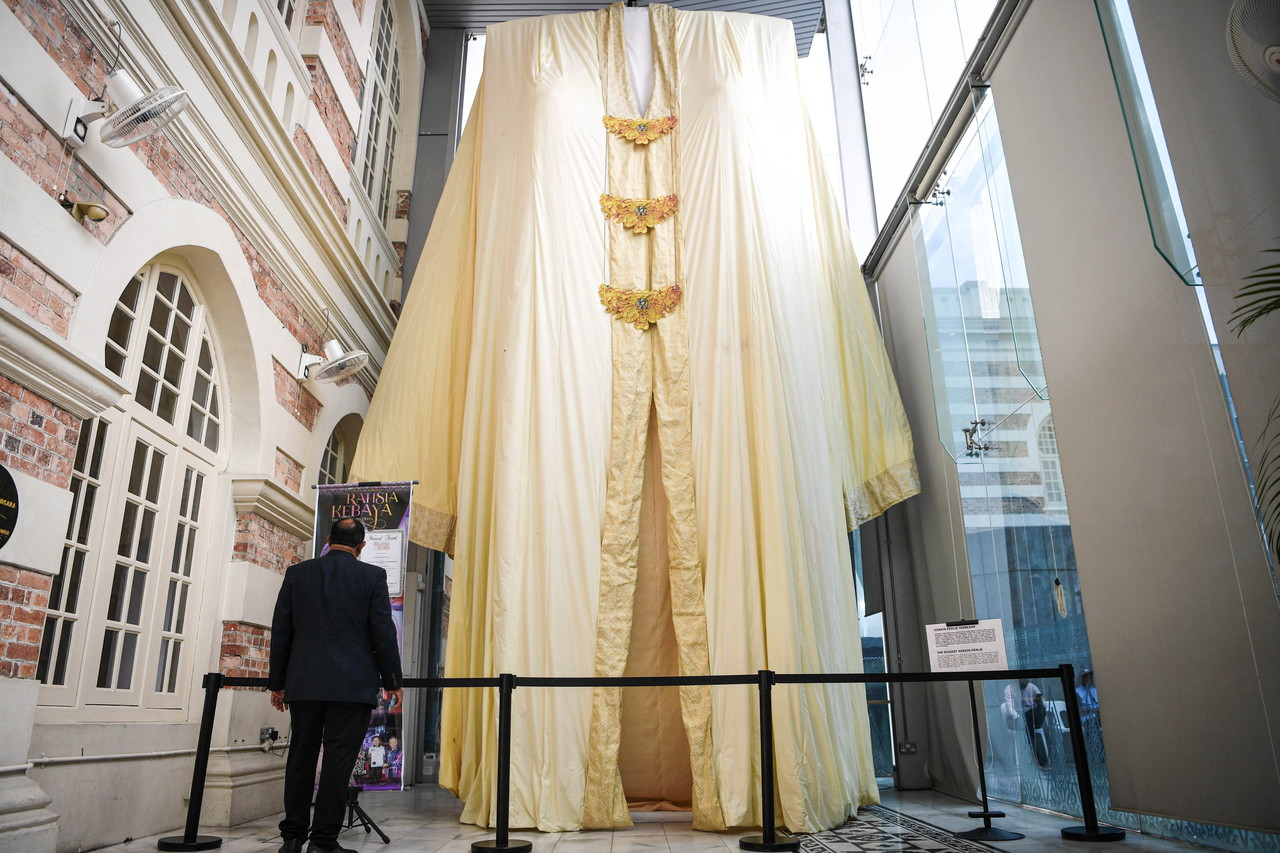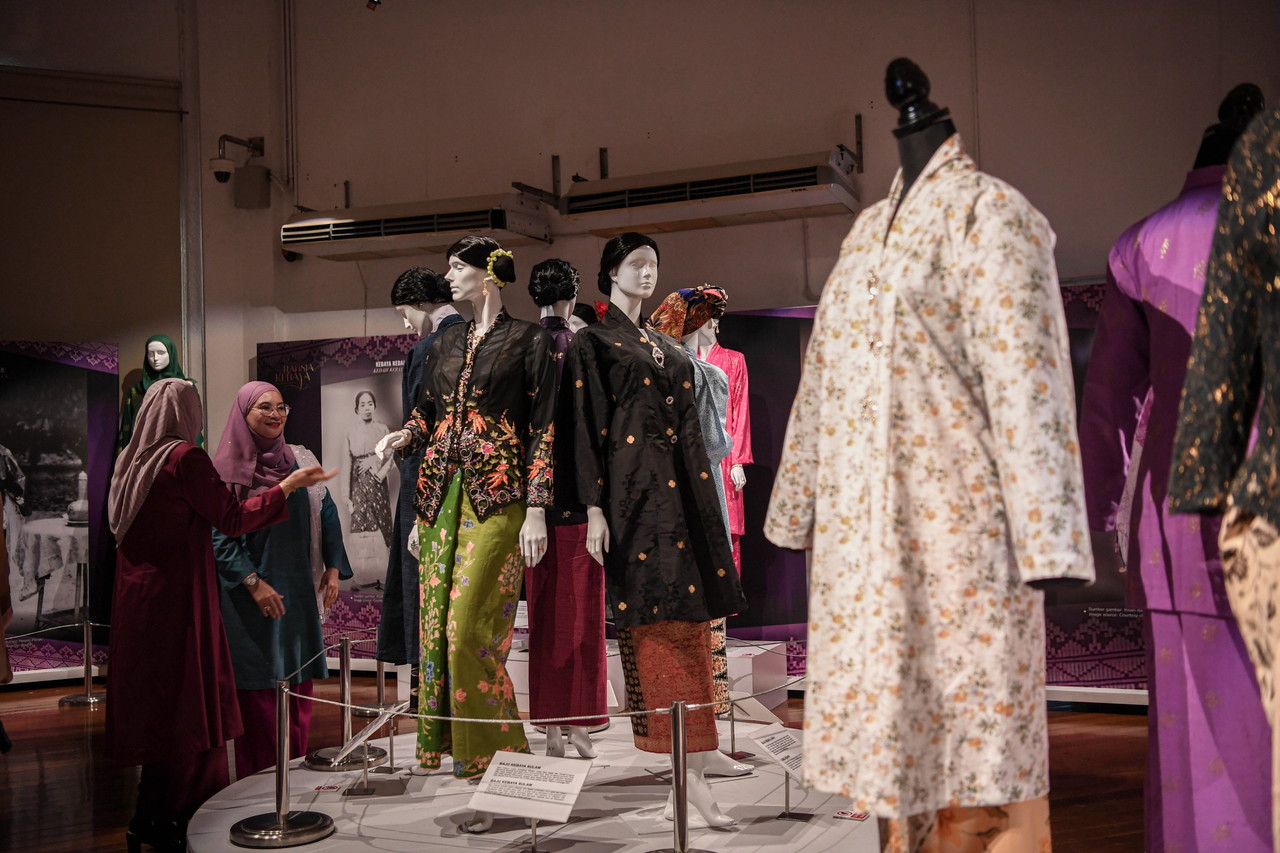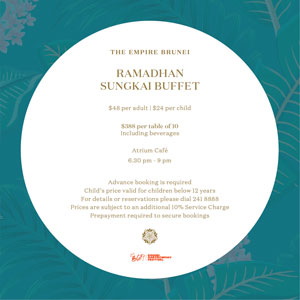KUALA LUMPUR (Bernama) — A giant yellow kebaya that stands 8.3 metres tall, recognised by The Malaysia Book of Records as the Largest Kebaya Perlis in 2013, is among the traditional garments on display at the Secret of Kebaya Exhibition at the Saindera Gallery, National Textile Museum, here.
The traditional kebaya, crafted from a 341-m-long fabric and completed within 15 days, was a testament to the dedication of lecturers and students from Kolej Komuniti Arau in Perlis. It was also featured in the Kebaya Fest Road to Milan programme.
The Secret of Kebaya Exhibition, featuring 60 kebaya collections, is organised by the National Unity Ministry in collaboration with the Department of Museums Malaysia (JMM) and will run until Dec 31.

Also on display is a ‘Kebaya Kota Bharu’, made of lace and paired with a batik sarong fabric with ‘ikatan jarik wiron’, as worn by famous actresses Nur Fazura and Fatin Afeefa in the films ‘Dendam Pontianak’ and ‘Showtime 1958,’ in 2019 and 2020, respectively.
Another highlight is a contemporary and iconic kebaya pendek set designed by the Fashion Design Department of Universiti Teknologi Mara in 1986, which has served as the uniform for Malaysia Airlines female flight attendants up to the present day.
There are also kebaya garments worn by members of the royal family, including Tengku Permaisuri of Selangor Tengku Permaisuri Norashikin’s long kebaya, made from the Royal Pahang Weave (Tenun Pahang Diraja), was gifted to her by the Raja Permaisuri Agong Tunku Azizah Aminah Maimunah Iskandariah.
National Textile Museum director Tengku Intan Rahimah Tengku Mat Saman said the Secret of Kebaya Exhibition aims to support the government’s role and efforts in elevating kebaya under the Unesco Intangible Cultural Heritage and Cultural Heritage of Humanity lists.
“Kebaya is a symbol of cultural heritage and holds great significance for Malay women, as well as Peranakan communities (including Chinese, Baba Nyonya, Chetti and Siamese) and other ethnic groups in Malaysia and other Southeast Asian countries.
“This exhibition can serve as a platform to educate the public, especially the younger generation, about the uniqueness and beauty of kebaya worn by diverse communities,” she told Bernama.

Tengku Intan Rahimah added that the exhibition showcases the uniqueness, elegance, and diversity of kebaya, as the country’s national identity, through five main segments, namely Kebaya Warisan Dulu, Kini dan Selamanya (Heritage of Kebaya, Past, Present, and Forever), Potongan Gaya Kebaya (Kebaya Styles), Kelengkapan Berkebaya (Kebaya Accessories), Kelestarian Kebaya (Kebaya Susutainability), and Kebaya Mata Dunia (Kebaya on the World Stage).
“Kebaya has been a popular choice among both the aristocracy and the public for many years as the preferred attire for various formal occasions and as casual wear.
“The uniqueness and identity of this garment can be seen through its cuts and designs. The basic style features a split at the front with a pesak (gore), long sleeves, and is secured with three pins and brooches,” she said, adding that the exhibition aims to draw 10,000 visitors.
The extensive evolution of the kebaya, according to Tengku Intan Rahimah, has resulted in the development of distinct styles, including traditional, modern, and fashion kebaya.
“The traditional kebaya, also known as long kebaya, features loose and straight cuts, a front opening with gore, a gusset (a triangular piece under the arm), and long and wide sleeves.
“The modern kebaya, on the other hand, has shorter and more streamlined cuts; it is typically hip-length without a gore or gusset but with long sleeves,” she added.
The exhibition also features accessories and personal adornments that complement the kebaya wearer’s appearance, including bangles, necklaces, cucuk sanggul (traditional hair pin), earrings, rings, brooches, pending (ornamental belt buckle), and belts.







